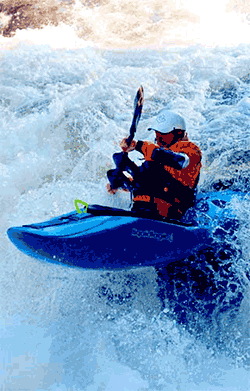Paddle Smart from the Start
Main_Content
Paddlers Safety Checklist
When getting ready to head out on your next paddling adventure, it is important to remember the following tips to make sure you have an enjoyable day on the water. The safety items you choose to bring will vary from trip to trip. Below are some items to consider, but this list is by no means complete.
Basic Trip:
- Leave a float plan with family or friends. It should detail where you are going and when you plan to return.
- Appropriate clothing – always dress for the weather and know what to expect. Temperature changes can occur rapidly. Layers of clothing insulate in cool weather better than a single garment. Cotton is not a good insulator, especially when wet.
- Wearable life jackets (personal flotation devices or PFD’s) for everyone on board with an appropriate sound producing device such as a whistle, attached. Reminder: If using an inflatable life jacket, the intended wearer must be at least 16 years of age as well as have it ON in order for it to count.
- Lots of drinking water.
- Proper footwear (closed toe sandals or shoes are best).
- Maps and river guides.
- Sunscreen.
- UV eye protection (choose a good pair of sunglasses and a strap to keep them on).
- Wide-brimmed hat for sun protection.
- First aid kit with matches.
- Dry bag to keep extra clothing, electronics, sleeping bag and other items dry during your trip.
- Rope and/or bungee cords to keep items such as tackle boxes and coolers attached to the canoe or kayak.
- Paddling trip should include planning for the worst-case scenario.
Overnight Trips
- Cooking and dining utensils (plates, forks, knives, cook stove and fuel, etc.).
- Extra matches.
- Fire starter.
- Food – amount depends on length of the trip and amount of people
- Necessary toiletries (toilet paper, shampoo, soap, toothpaste and toothbrush, etc.).
- Sleeping bag.
- Sleeping pad.
- Tent.
 More Advanced Trips
More Advanced Trips
(Longer trips/trips with rapids and hazards)
- Helmet- a helmet is important in whitewater where upsets are likely or when spray skirts or thigh restraints are in use.
- A whistle or sound signaling device.
- Bilge pump, sponge and/or bailer – important for those in open water, always carry some device that can get water OUT of the boat.
- Compass and/or GPS and a good map of the river – know where you are and how to get out in an emergency.
- Duct tape/small repair kit.
- Waterproof tarp.
- Light/signal.
- River knife – when there are ropes and rigging to get tangled in, a knife may be needed.
- Self-rescue devices – paddle float, slings, tow ropes, throw bags and throw ropes.
- Spare paddle.
- VHF radio – for emergencies and monitoring the weather.
- Water bucket or folding jug.
- Water purification tablets or filter.
- Two “painter lines” – 30’ long, ¼” thick nylon ropes to attach to the bow and stern of your boat.
Free online paddling course!
Would you like to know more before going on your next canoeing or kayaking adventure?
The Maryland Natural Resources Police encourage everyone to get educated. One way to make sure you’re prepared for a safe and fun outing would be to try this free online paddling course.
It’s perfect for any age of paddler and it will teach you the basics of paddling safe and smart.
Click here to start the program now!